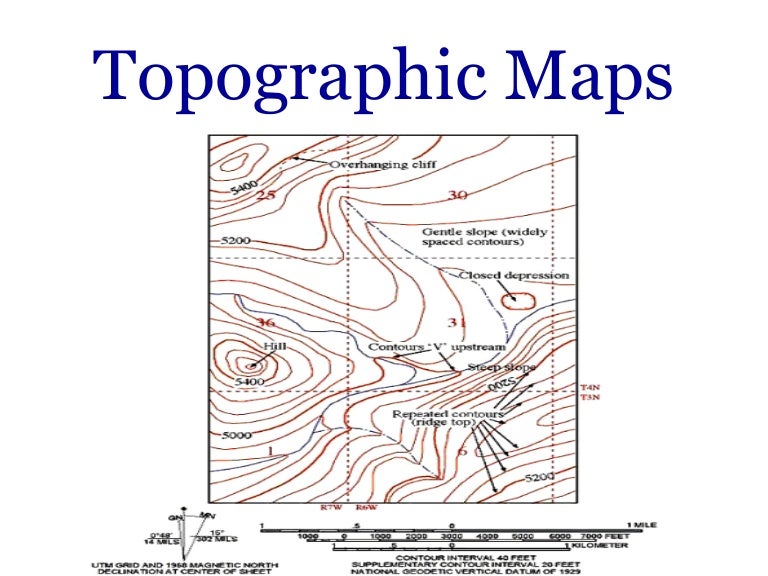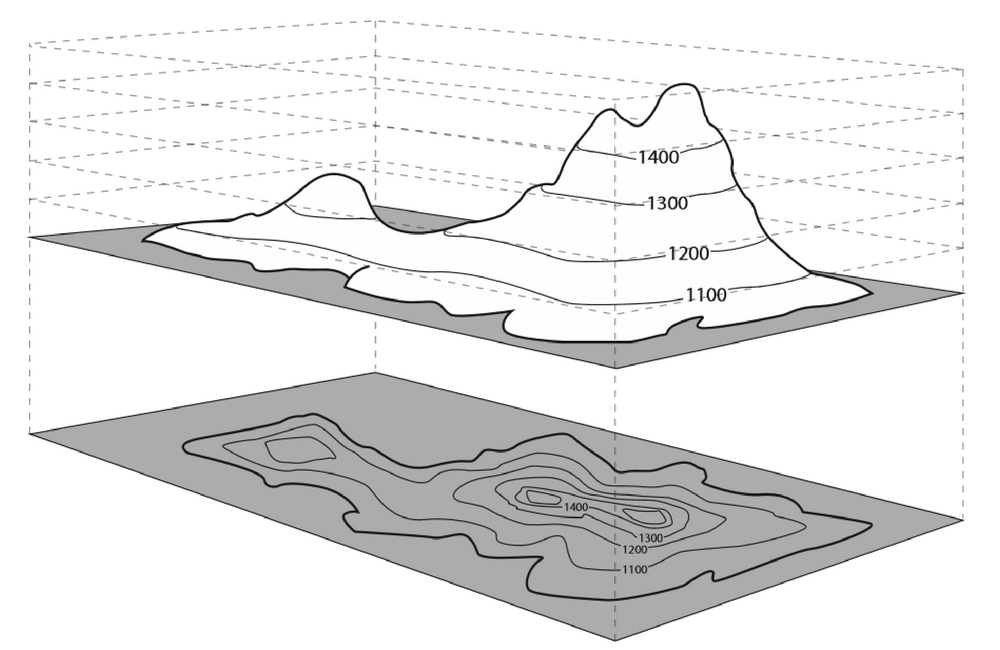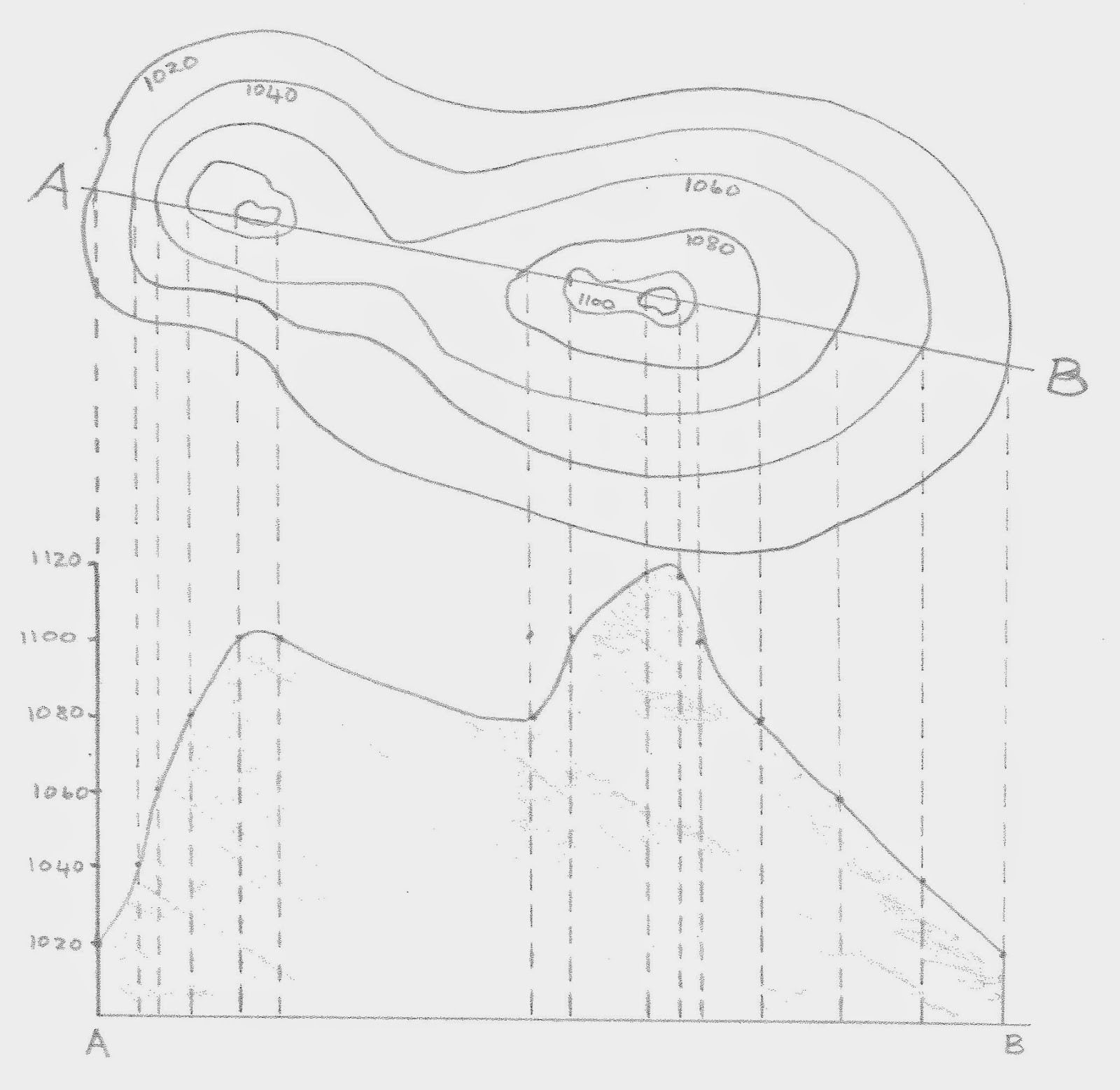

Moreover, in Kvamme's work, some features were robustly indicated in all three datasets, resulting in a white color, and some features were instead represented by a black color indicating a low response for all three surveys. In the case of Kvamme's Army City data, he represented each of the geophysical techniques with the following colors: red for EM resistivity, green for EM conductivity, and blue for magnetic susceptibility, resulting in different structural features being represented simultaneously in the same image but at the same time provide a tool to easily discern the objects detected by the different geophysical methods. Color composites have been used initially for displaying satellite imagery successively, this technique has been tested for integrating geophysical data.
#AN EASY CONTOUR MAP FULL#
Red-green-blue (RGB) color composite: In this visualization method, each of three datasets is assigned a primary color, and the images are then combined to create color mixes that span the full visual spectrum indicating the degree of overlapping of the anomalies detected by the single methods, as observed in Fig. If the elevation of the lower contour line is 820 ft, then the estimated elevation is: As an example, on a map with a contour interval of 20 ft, the distance of a point from the lower contour line is 10 cm, and the distance between the lower contour and the next higher contour line is 30 cm. Finally, add the resulting fraction of the contour interval to the lower contour elevation to obtain the point's estimated elevation. Then apply that proportion to the contour interval. Next, determine the distance from the point to the lower contour, as a proportion of the total distance between the two contours. The procedure for estimating the elevation at any location is to first draw a line through the point whose elevation is to be determined in the direction of maximum slopes, that is, at right angles to the contour lines. If, for example, a point is located halfway between two contour lines, the point's elevation is estimated as being halfway between the elevation values of those lines. In the absence of additional information, linear interpolation is a logical procedure that involves using rules of proportionality for the estimate.


Linear interpolation is based on the assumption that the slope between contours is constant, an assumption that may not actually be correct, and that introduces potential errors into the estimation. If the point falls between contours, however, a technique called linear interpolation may be used to arrive at the estimated elevation. If the point whose elevation is to be estimated falls on a contour line, the elevation of that contour is the best estimate of the point. Elevations at other locations must be estimated. On contour maps the elevations of benchmarks and other spot locations are often given exactly. HENDRICKS, in Environmental Monitoring and Characterization, 2004 DETERMINATION OF ELEVATION Examples include western Europe and the western U.S.A.ĭ.M. Continental extension and rifting is also an important geologic process and results in thinned crust. These regions have high topography and are subject to rapid erosion. Indeed, the crust with a thickness in excess of 50 km is almost always a young, active mountain belt. For example, the crust of western Australia is older (3000 Ma.) than central Australia (less than 2000 Ma.), yet the crust is at least 10 km thinner in western Australia. The crust does not show a pattern of increased thickness with age, as would be the case if it were repeatedly subjected to igneous intrusions from the underlying mantle. 6) only shows large-scale crustal features, thus some regions of locally thick crust are not visible. Crust that is thicker than 50 km is restricted to a few regions, including the Tibetan Plateau of western China, the Andes of western South America, and the Precambrian shield of southern Finland. The crust is typically 30 km thick at the ocean-continent margin and gradually increases toward the continental interior to 40–45 km. Ocean basins have 6–7 km thick crust (not including 4–5 km of water) and continents have an average thickness of 39.7 km. 6) shows the bimodal division of the earth's crustal thickness. A contour map of global crustal thickness ( Fig.


 0 kommentar(er)
0 kommentar(er)
